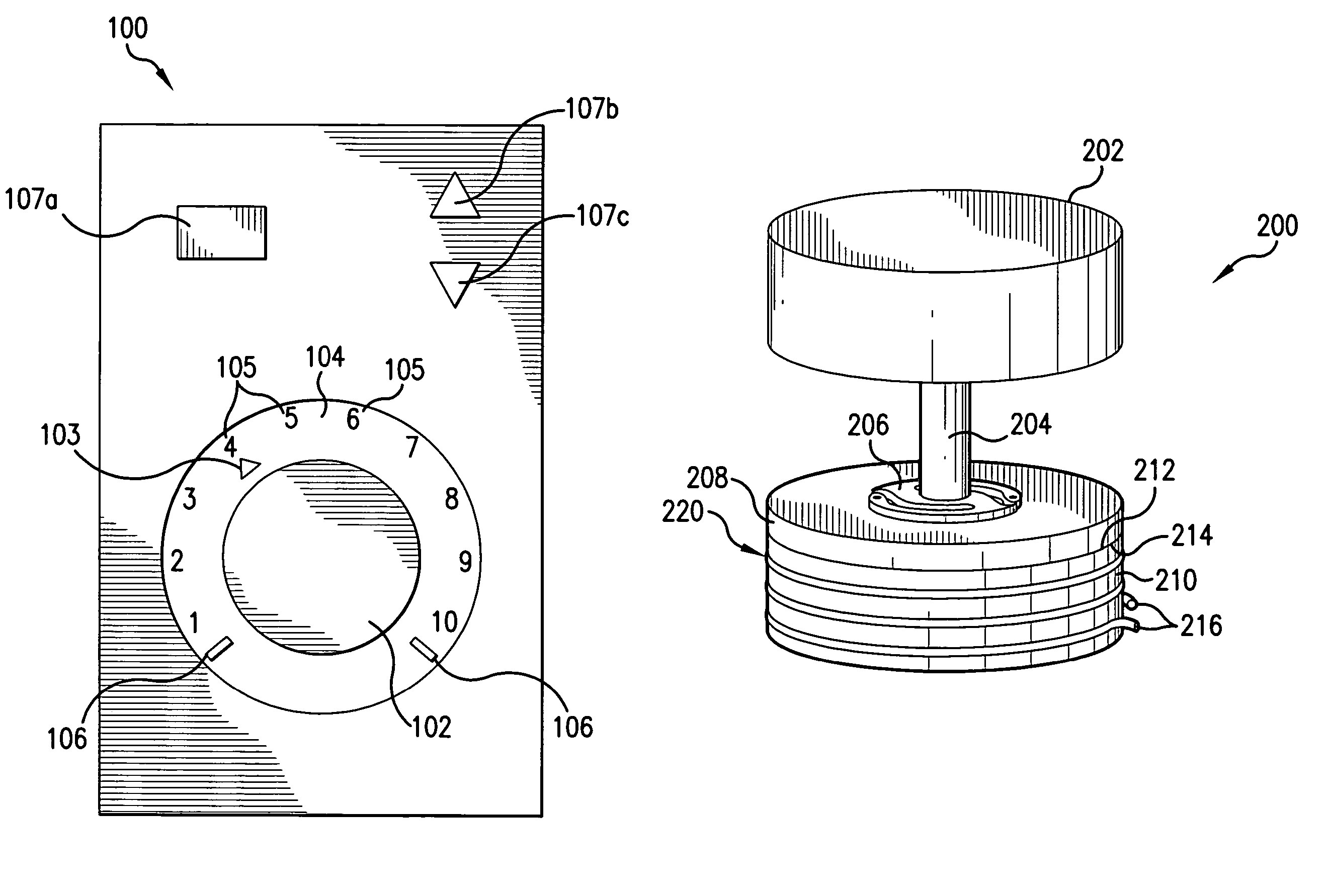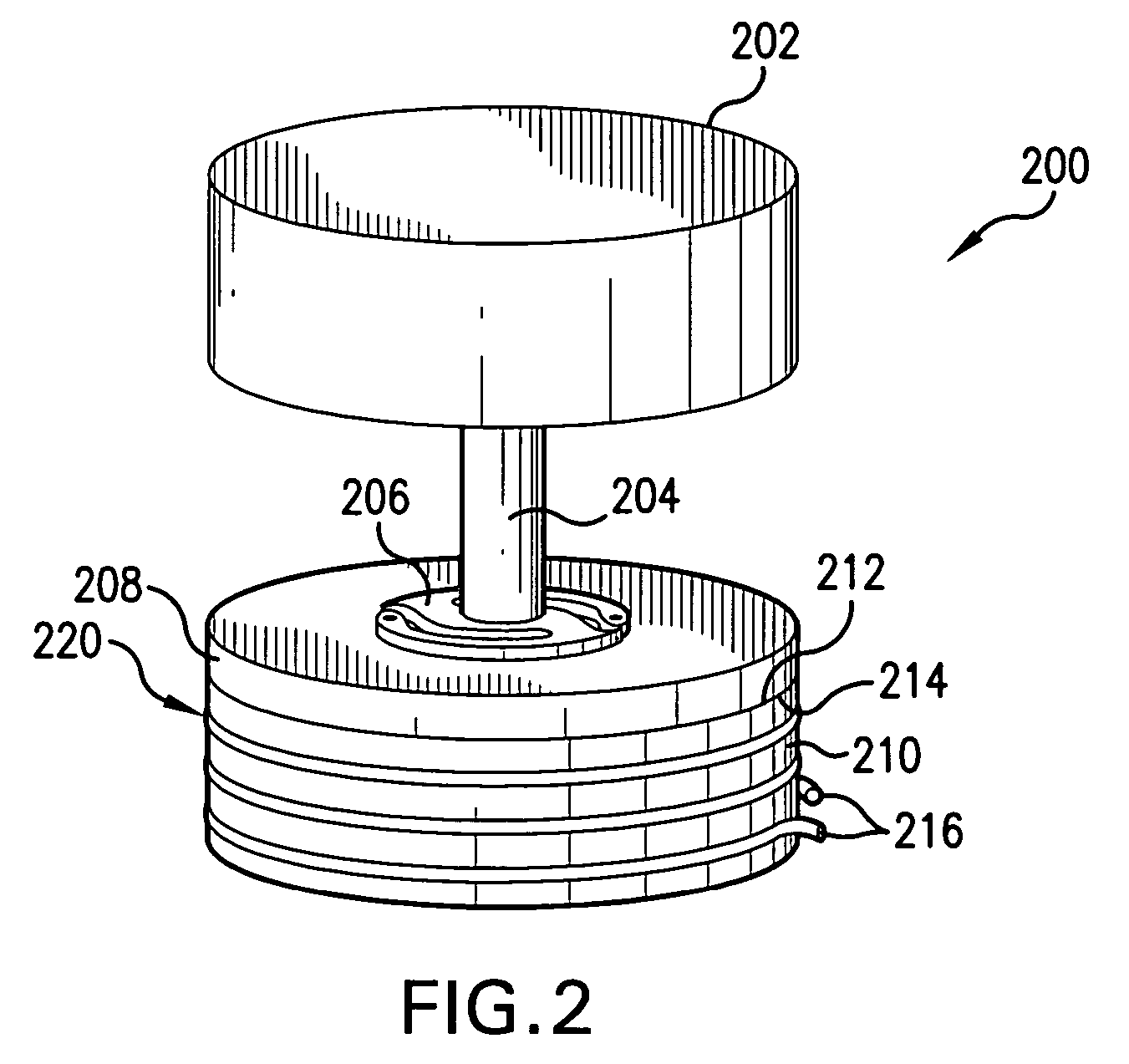Systems and methods for providing a haptic device
a technology of haptic devices and haptic feedback, which is applied in the direction of mechanical control devices, process and machine control, instruments, etc., can solve the problems of inability to provide a wide variety of types and levels of haptic effects for users, device inability to detect, and conventional haptic devices may not be able to provide a “barrier” haptic effect, etc., to achieve the effect of degree of rotational flexibility
- Summary
- Abstract
- Description
- Claims
- Application Information
AI Technical Summary
Benefits of technology
Problems solved by technology
Method used
Image
Examples
Embodiment Construction
Embodiments of the present invention provide systems and methods for providing a haptic feedback device. A device may incorporate a variety of technologies for providing haptic feedback, comprising both active and resistive devices. Active haptic feedback devices, comprising, for example, devices incorporating motors, generally add energy to a system; resistive devices, such as devices incorporating brakes, generally remove energy from the system.
Active haptic actuators may utilize, for example, alternating current (AC) or direct current (DC) electric motors and / or generators. Resistive haptic actuators may utilize, for example, electromagnetic brakes, magnetic particle brakes, magnetorheologic or electrorheologic brakes, or magnetic (non-friction) brakes. Electromagnetic brakes utilize a magnetic core, a coil, and a magnetic target. When a current is applied to the coil, the magnetic core acts upon the magnetic target. Magnetic particle brakes utilize a powder comprising particles ...
PUM
 Login to View More
Login to View More Abstract
Description
Claims
Application Information
 Login to View More
Login to View More - R&D
- Intellectual Property
- Life Sciences
- Materials
- Tech Scout
- Unparalleled Data Quality
- Higher Quality Content
- 60% Fewer Hallucinations
Browse by: Latest US Patents, China's latest patents, Technical Efficacy Thesaurus, Application Domain, Technology Topic, Popular Technical Reports.
© 2025 PatSnap. All rights reserved.Legal|Privacy policy|Modern Slavery Act Transparency Statement|Sitemap|About US| Contact US: help@patsnap.com



